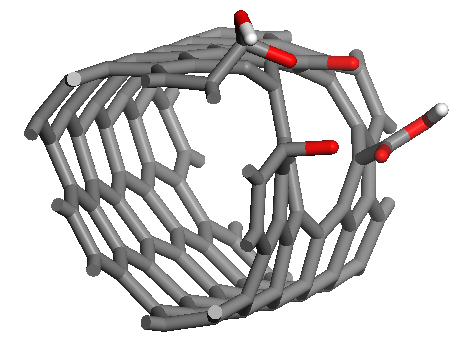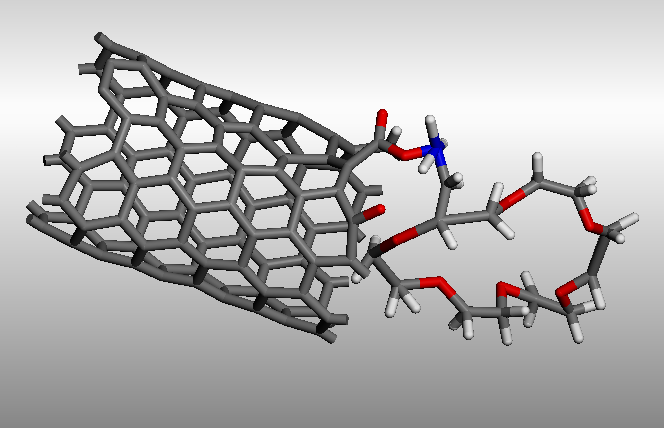Organic Systems
1. Solution phase ozonolysis of carbon nanotubes for (a) purification and removal of metal impurities and amorphous carbon. (b) Sidewall functionalization (1,3-dipolar cycloaddition) of tubes. (c) Evidence that ozonolysis is selective for reaction with smaller-diameter tubes. (d) Rational control of oxygenated group density and distribution on sidewalls. Protocol presented a nondestructive, low-temperature, diameter-selective method for introducing oxygenated moieties onto nanotube sidewalls, with implications for the design of well-dispersed nanotube-based composites. Ozonized tubes are also potential energy storage devices.
Refs.: J. Phys. Chem. B, v.106, 12144 (2002); Nano Lett., v.4, 1445 (2004); J. Mater. Chem. (cover), v.16, 141 (2006); Chem. Phys. Lett., v.442, 354 (2007); and J. Coll. Interf. Sci., v.317, 375 (2008).

2. Organic derivatization of carbon nanotubes with crown ethers to increase the solubility of carbon nanotubes in wide range of aqueous and organic solvents (up to as much as 1 g/L from a nominal value of 10 mg/L for unprocessed tubes). Noncovalent, nondestructive functionalization technique for controllably modifying and solubilizing virtually any type of nanotube.
Ref.: Nano Lett., v.2, 1215 (2002).

